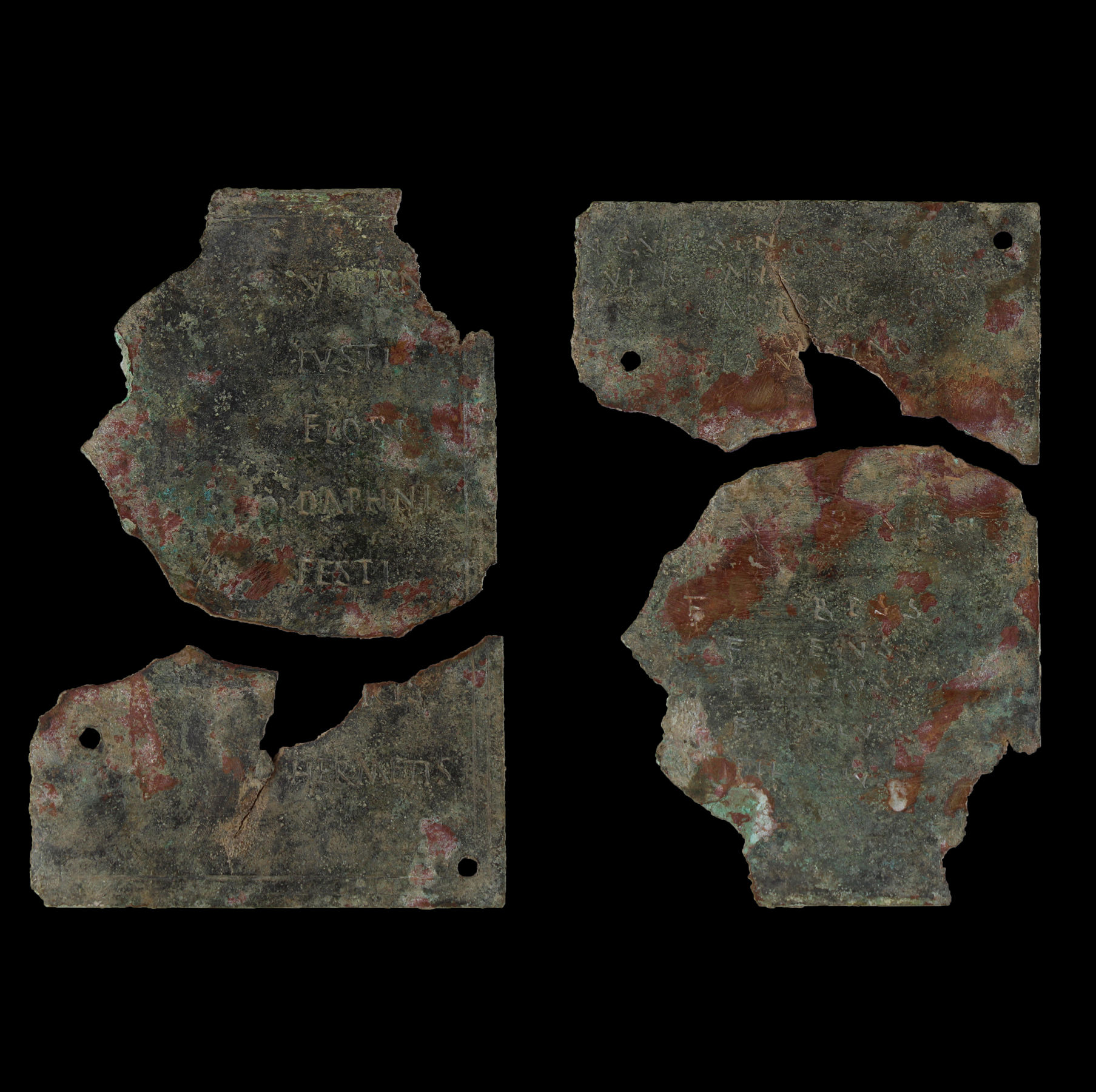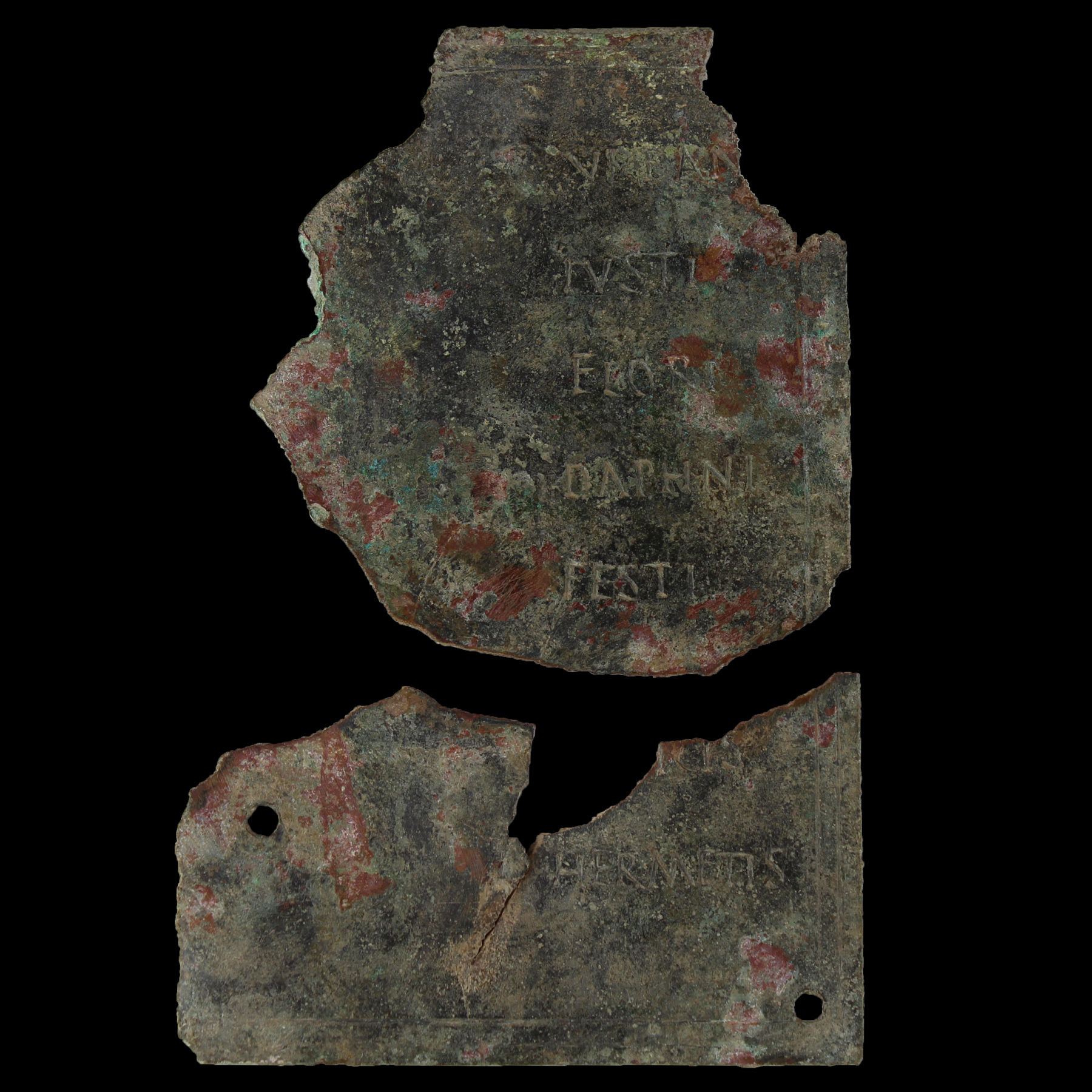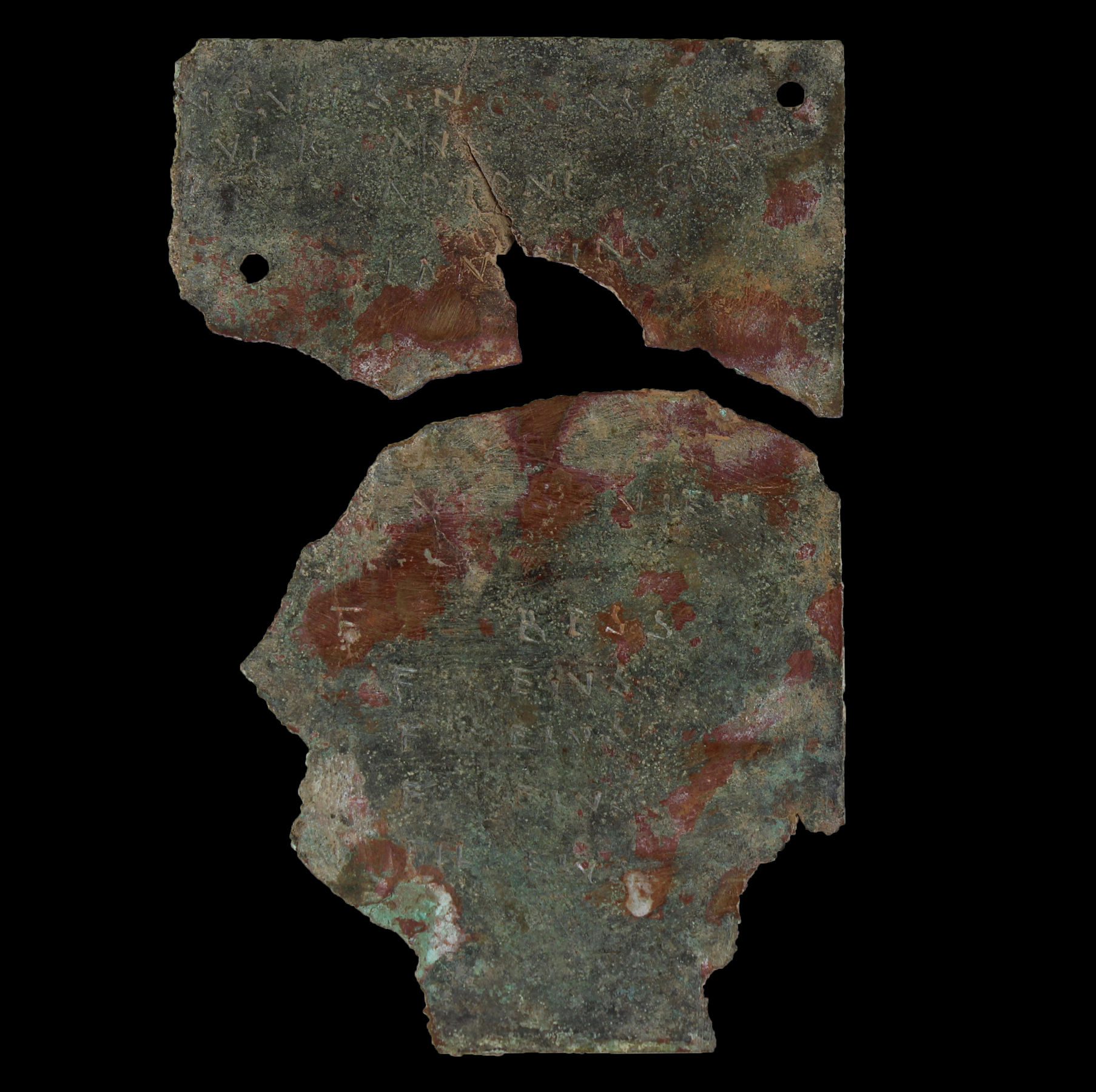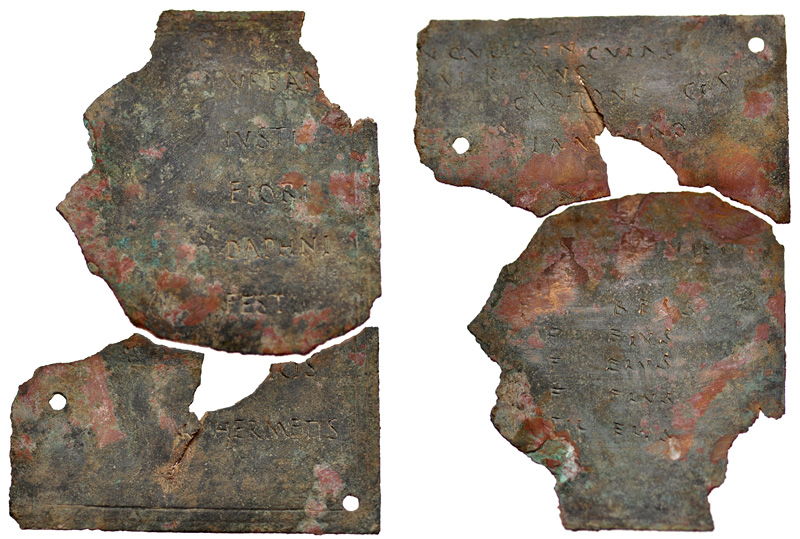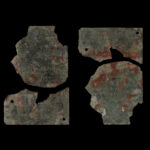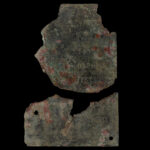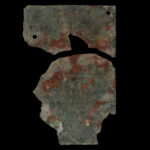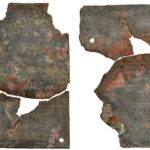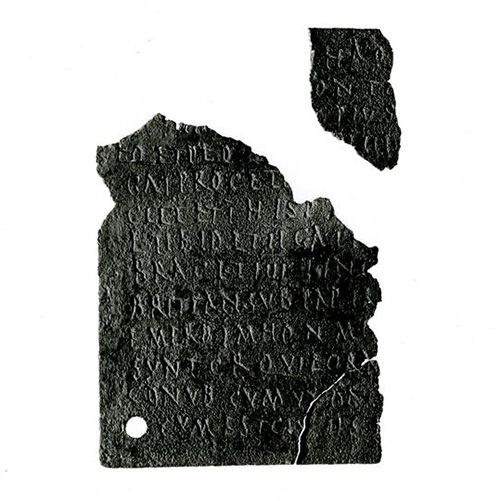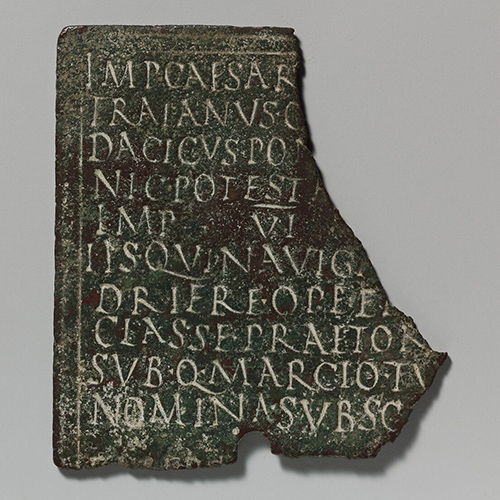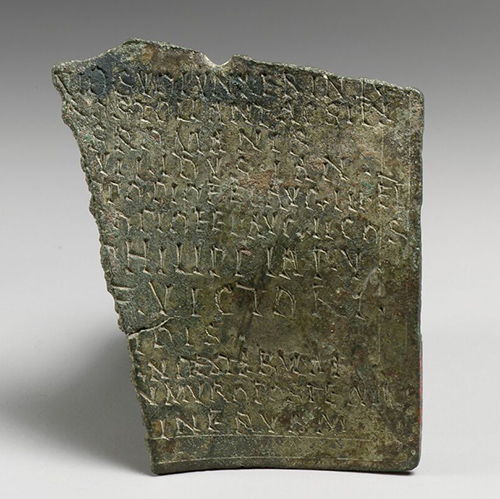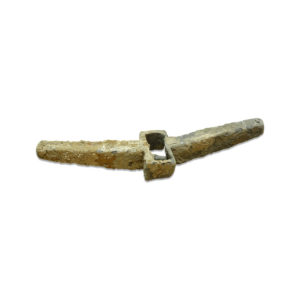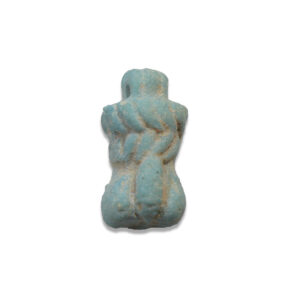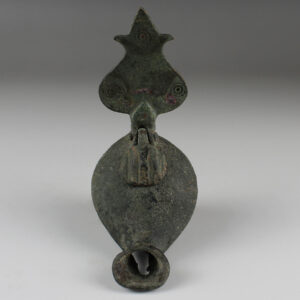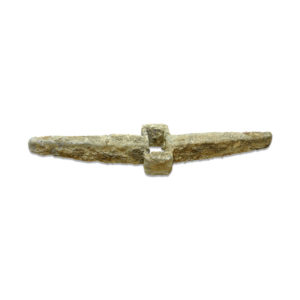Description
| ITEM | Military diploma (fragment) by the consuls Ti. Iulio Capito and L. Vitrasius Flaminius |
| MATERIAL | Bronze |
| CULTURE | Roman |
| PERIOD | 122 A.D, Hadrian period |
| DIMENSIONS | 135 mm x 90 mm, 74,4 gr |
| CONDITION | Good condition. Includes the publication. |
| PROVENANCE | Ex American Gallery, acquired in 2015. Ex American auction house |
| PUBLISHED | ECK W. & PANGERL A., Fragmentarische Militärdiplome aus der Zeit von Domitian bis Commodus. ACTA MVSEI NAPOCENSIS 56/I (2019), 60–65 |
Diploma represented by the consuls Ti. Iulio Capito and L. Vitrasius Flaminius in the year 122 A.D. on 17 July
Intus:
[ENT DVMTAXAT SI]NGVLI SINGVLAS
[A D ] XVI K AVG
[TI IVLIO] CAPITONE COS
[L VITRASIO] FLAMININO
[— ]CVI PRAEST
[– ] L+V L E V+
[ EX– ]
[– ] F BESS
[– ] F EIVS
[– ] F EIVS
[– ] F EIVS
[– ] FIL EIVS
[ ] vacat
Extrinsecus:
[– ] VRBANI
[– ] IVSTI
[– ] FLORI
[– ] DAPHNI
[– ] FESTI
[ FEL]ICIS
[– ] HERMETIS
The text can be reconstructed as:
[Imp(erator) Caesar divi Traiani Parthici f(ilius) divi Nervae nepos Traianus Hadrianus Augustus pontifex maximus, tribunicia potestate VI, co(n)s(ul) III, proco(n)s(ul) equit(ibus) et pedit(ibus), q(ui) mil(itaverunt) in al(is) III et coh(ortibus) V, q(uae) app(ellantur) Gall(orum) Cap(itoniana) et Gall(orum) Atect(origiana) / et — I Br(acar)aug(ustanorum) et II Fl(avia) Numidar(um) et II Fl(avia) Bess(orum) et III Gall(orum), quae sunt in Dac(ia) infer(iore) sub Cocceio Nasone, qui quin(is) et vic(enis) plur(ibusve) stip(endiis) emer(itis) dim(issis) hon(esta) miss(ione), quorum nomina subscripta / sunt, ipsis liberis posterisqu(e) eorum civitat(em) / dedit et conub(ium) cum uxoribus quas tunc / habuiss(ent), cum est civitas iis data, aut / si qui caelib(es) essent cum iis, quas post(ea) du/xissent, dumtaxat si]nguli singulas. / [A(nte) d(iem)] XVI k(alendas) Aug(ustas) / [Ti(berio) Iulio] Capitone / [L(ucio) Vitrasio] Flaminino co(n)s(ulibus). [Alae/Coh(ortis)— cui praest / —] VLEV / [ex– / –] f(ilio) Besso / [–] f(ilio) eius / [–] f(ilio) eius / [–] f(ilio) eius / [–] fil(iae) eius.
[Ti(beri) Iuli] Urbani; [A(uli) Fulvi] Iusti; [P(ubli) Atini] Flori; [L(uci) Pulli] Daphni; [Q(uinti) Lolli] Festi; [Ti(beri) Iuli] Felicis; [C(ai) Vettieni] Hermetis.
A Roman military diploma was a document inscribed in bronze certifying that the holder was honourably discharged from the Roman armed forces and/or had received the grant of Roman citizenship from the emperor as reward for service. Issued to Roman Auxiliary soldiers uponcompletion of their standard 25 year term of service.
The diploma was a notarised copy of an original constitutio (decree) issued by the emperor in Rome, listing by regiment (or unit) the eligible veterans. The constitutio, recorded on a large bronze plate, was lodged in the military archive at Rome (none such has been found; presumably they were melted down in later times).
The diploma consisted of two bronze tablets hinged together. Inscriptions would be engraved on each side of both plates. The full text of a diploma was engraved on the outer side of the so-called tabula 1, while the outer side of tabula 2 displayed the names of 7 witnesses, their seals covered and protected by metal strips (such seals have rarely survived, being of organic material). The text of tabula 1 was reproduced exactly on the two inner sides. The plates would then be folded shut and sealed together, so that the external inscription would be legible without breaking the seals. The internal inscription was the official notarised copy of the text on the constitutio published in Rome. The double-inscription and seals were presumably to prevent forgery or alteration.
In a likely scenario, the holder would take the sealed diploma to the province or civitas (city/county) where he intended to live in retirement. He would then present the diploma to the keeper of archives either at the provincial governor’s headquarters (or perhaps at his local civitas offices). The archivist could break the seals and check that the data on the internal inscription matched the external one. If all was in order, he would then enter the diploma-holder’s name onto the register of resident Roman citizens.
Over 800 diplomas from the Principate have been found and over 650 published (although the majority have survived in only fragmentary form)


